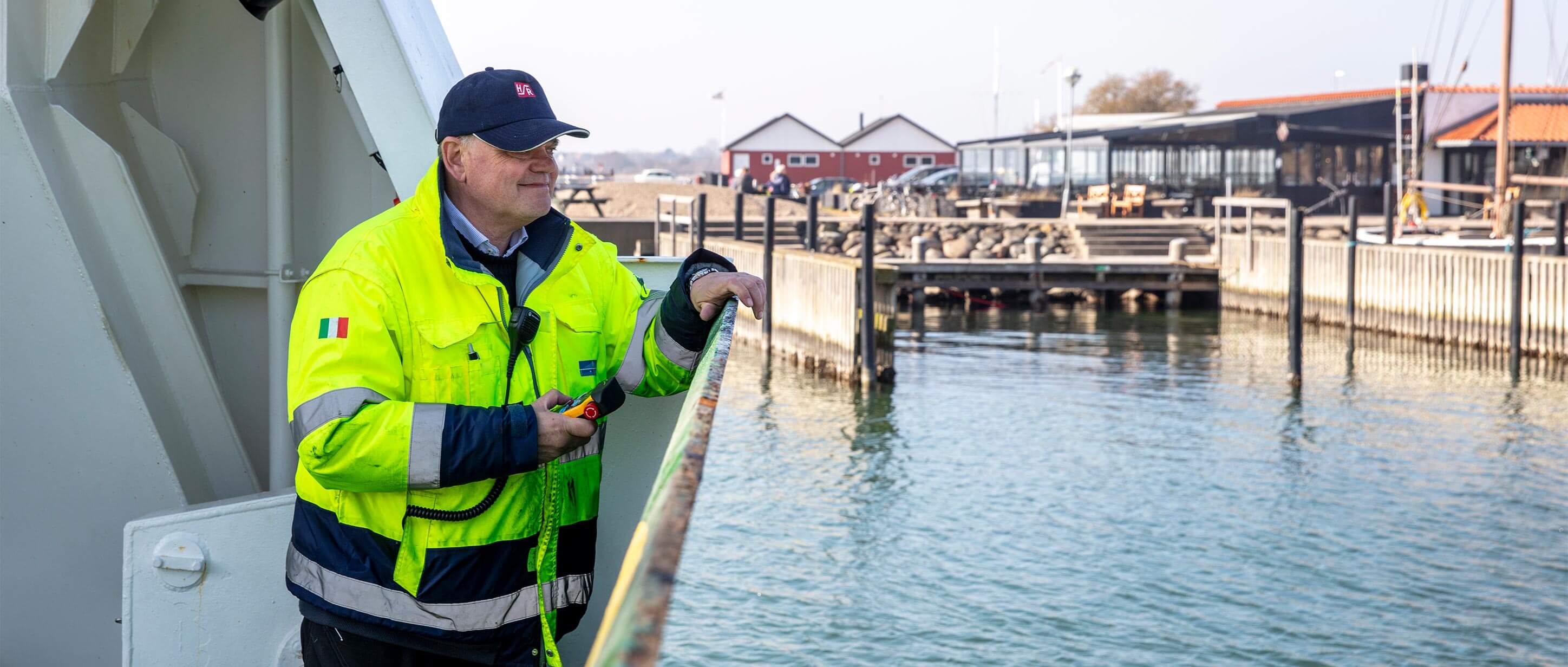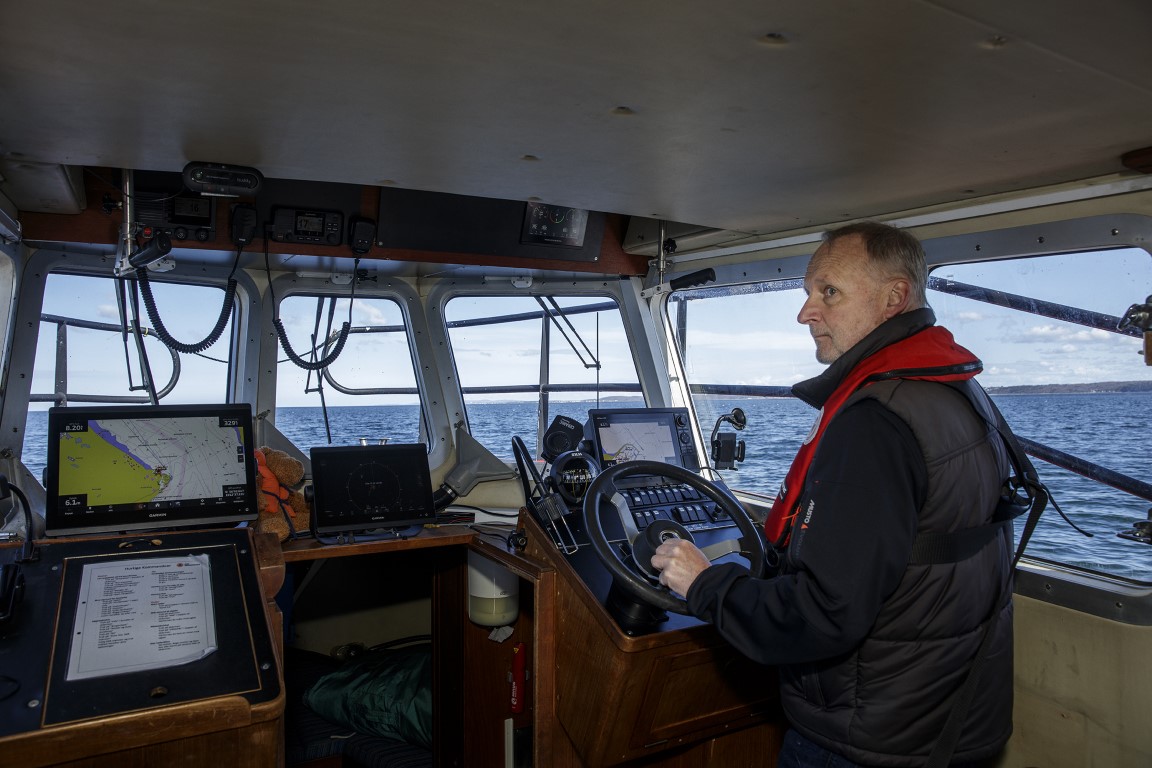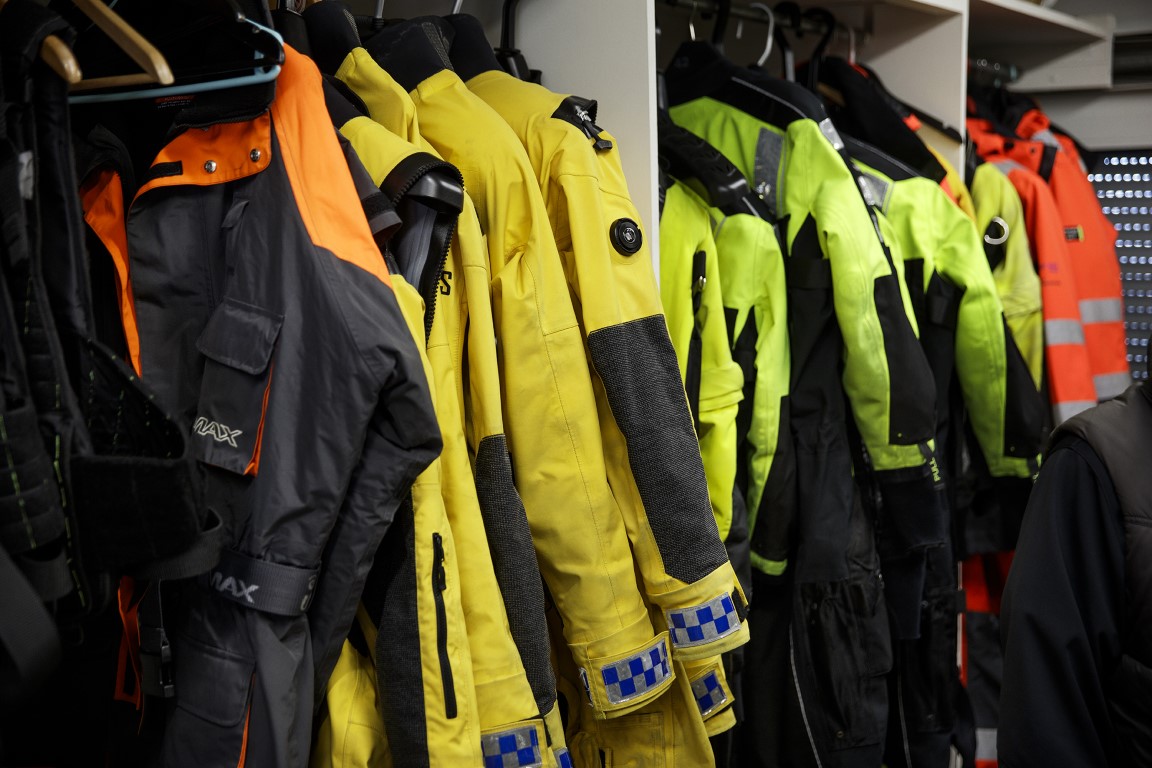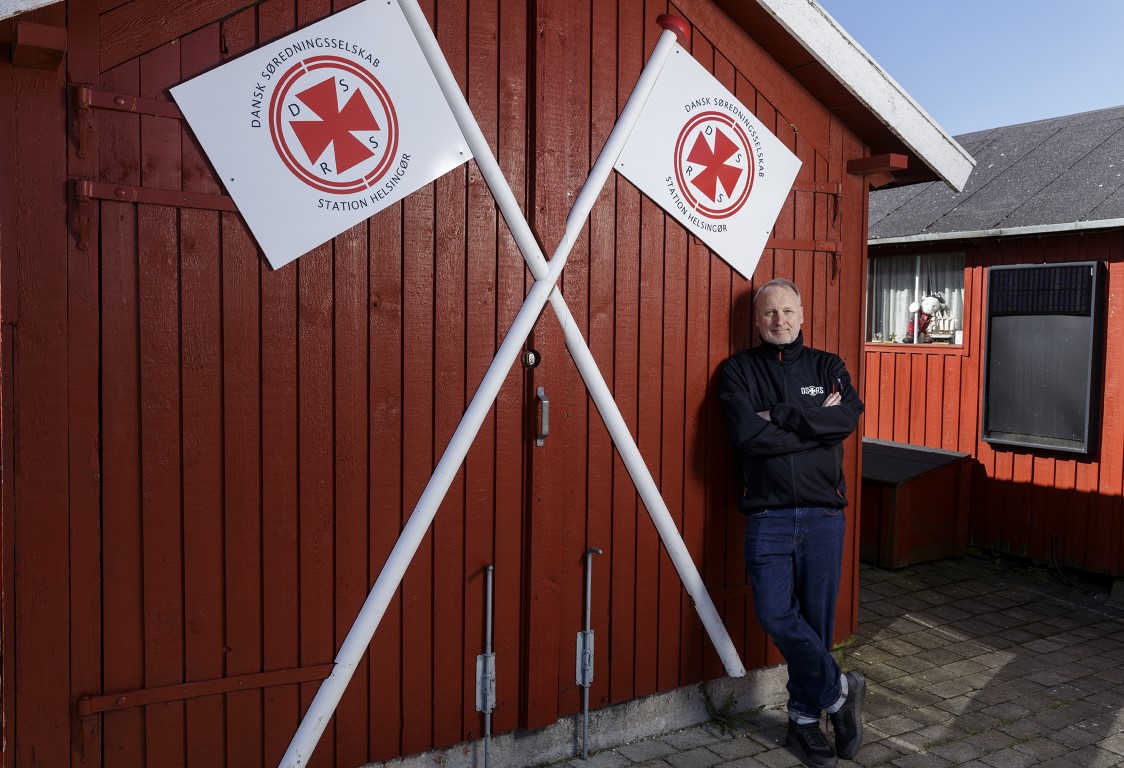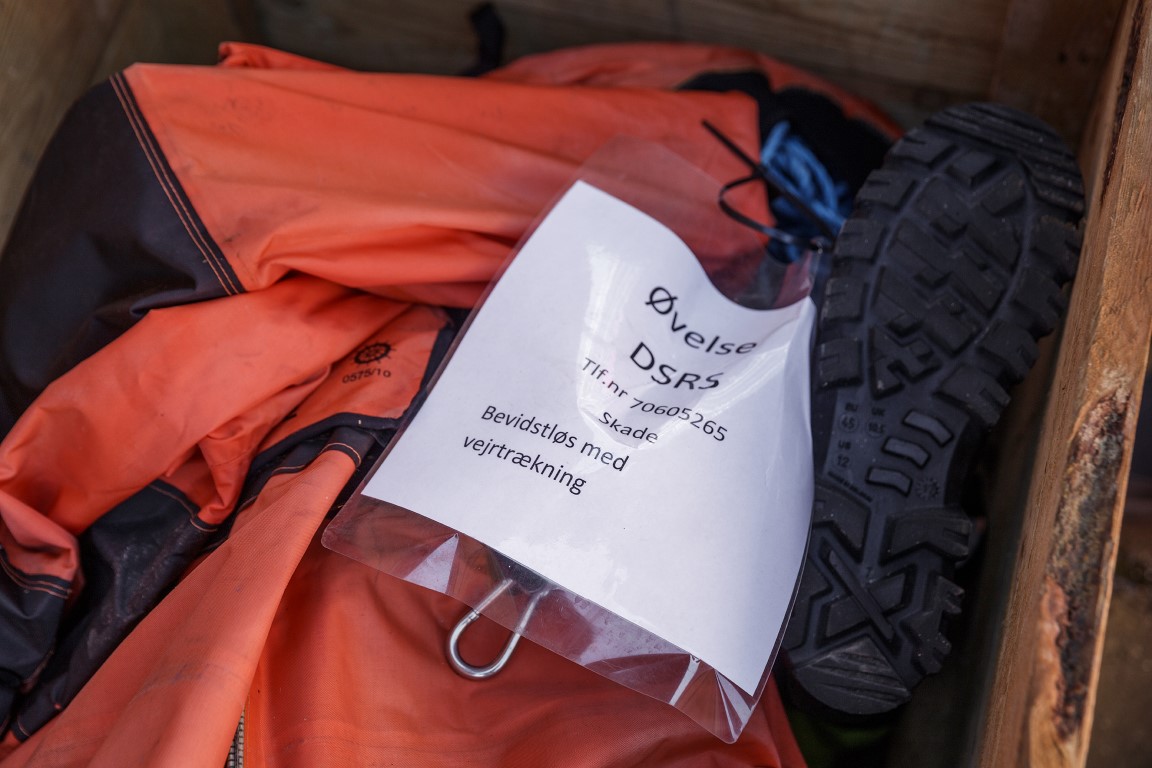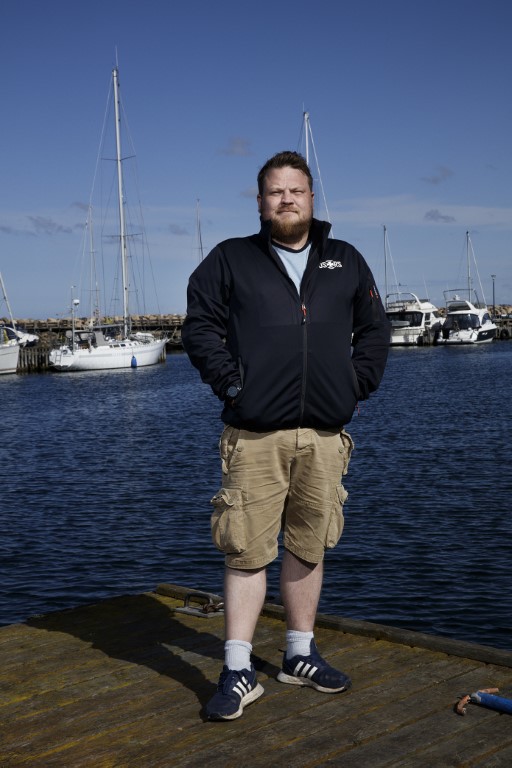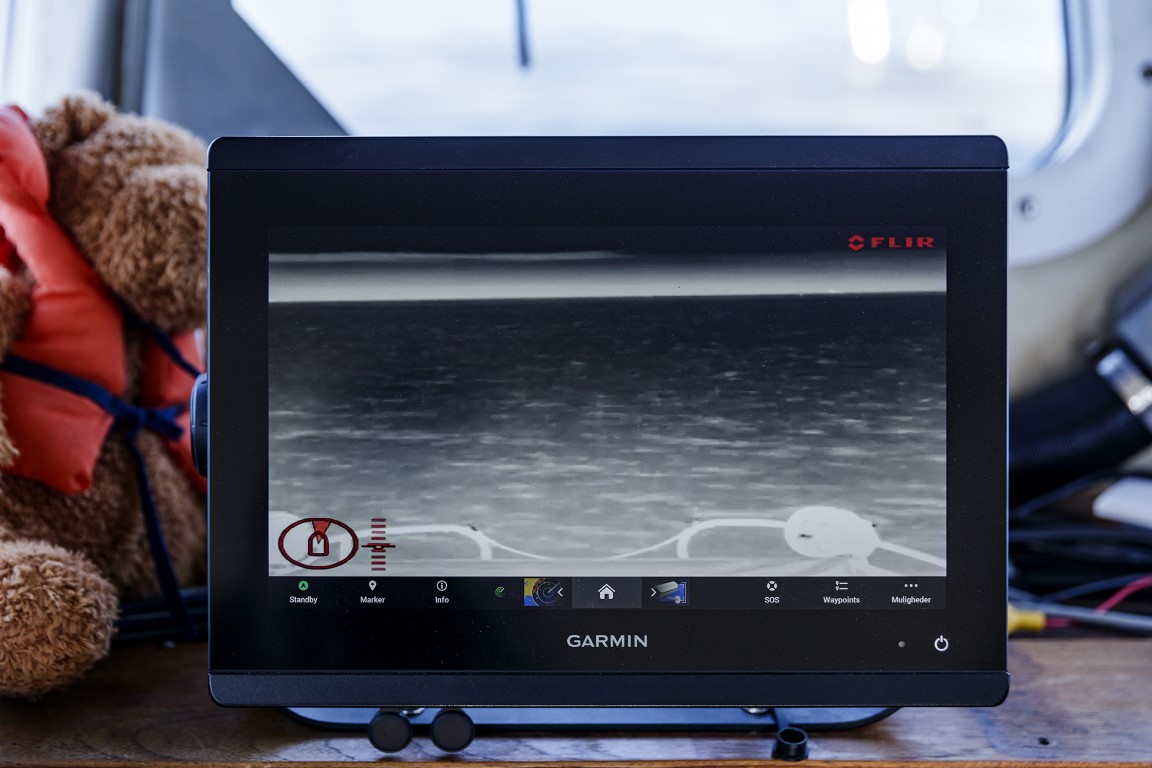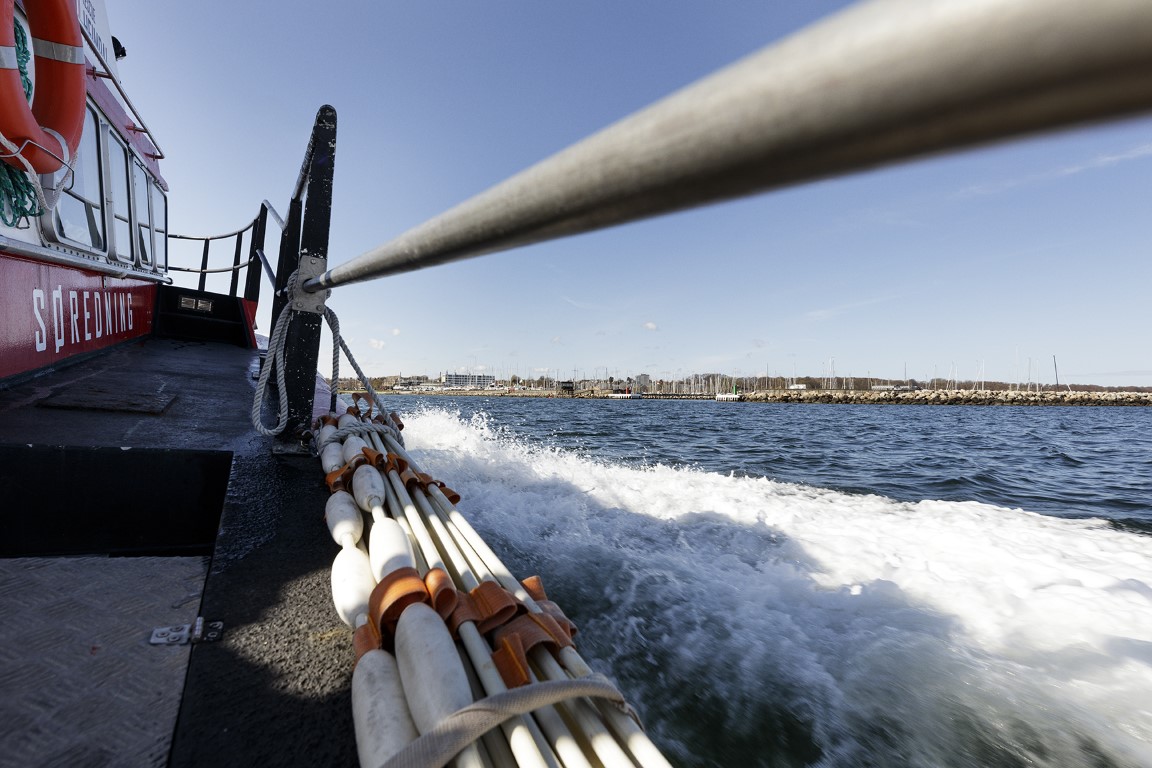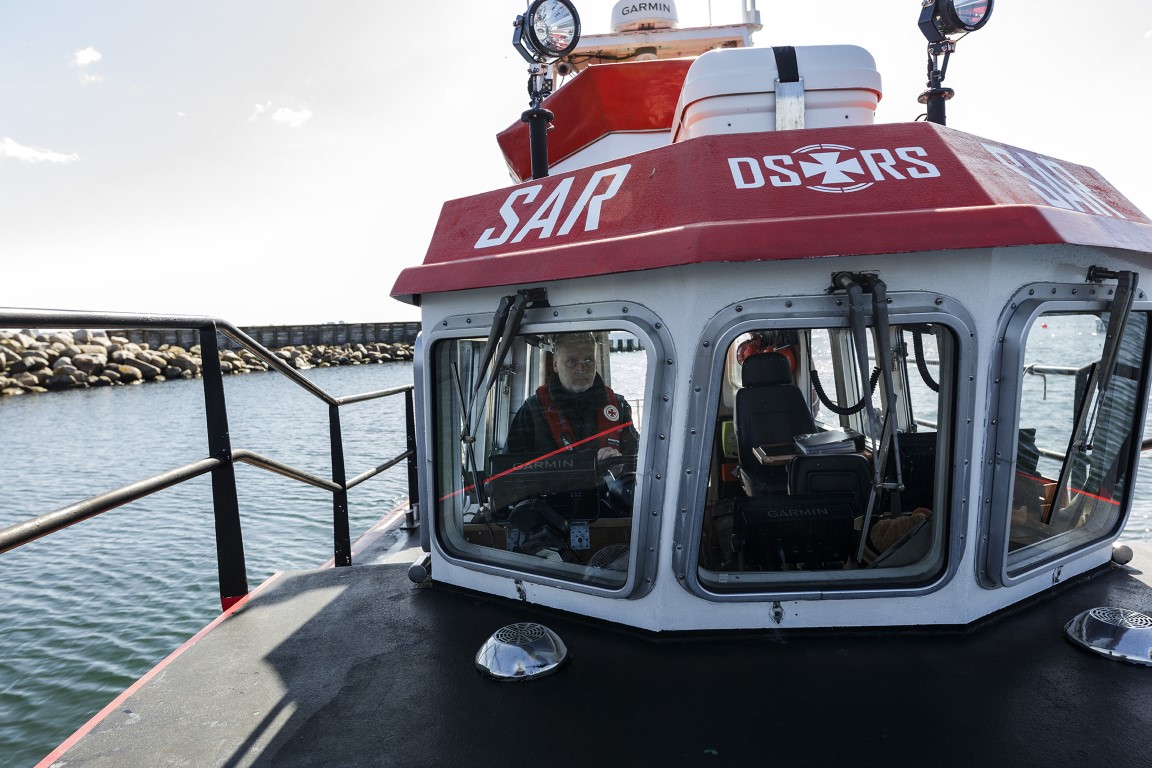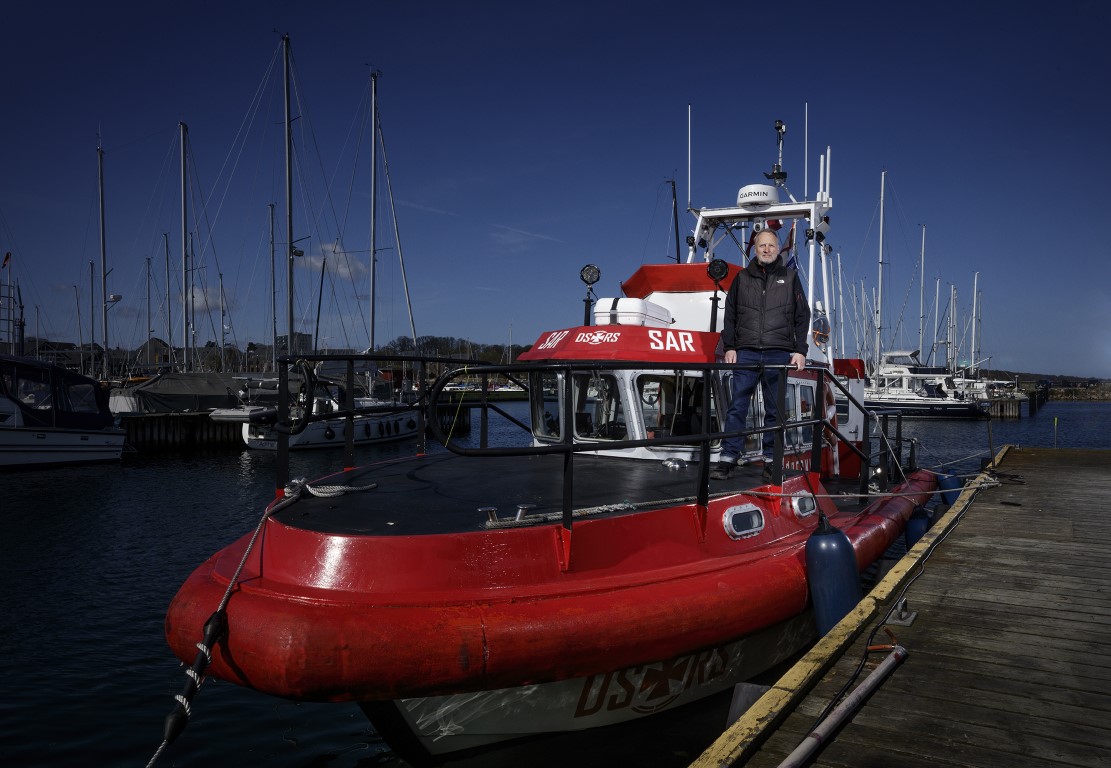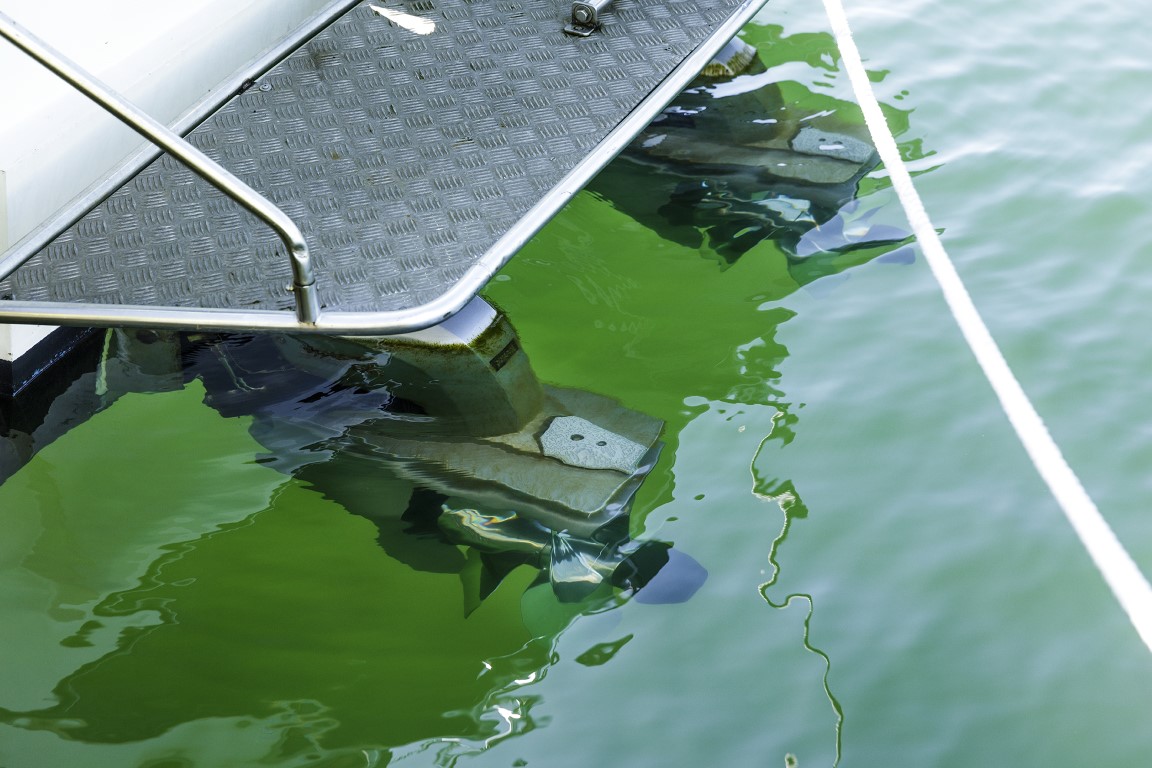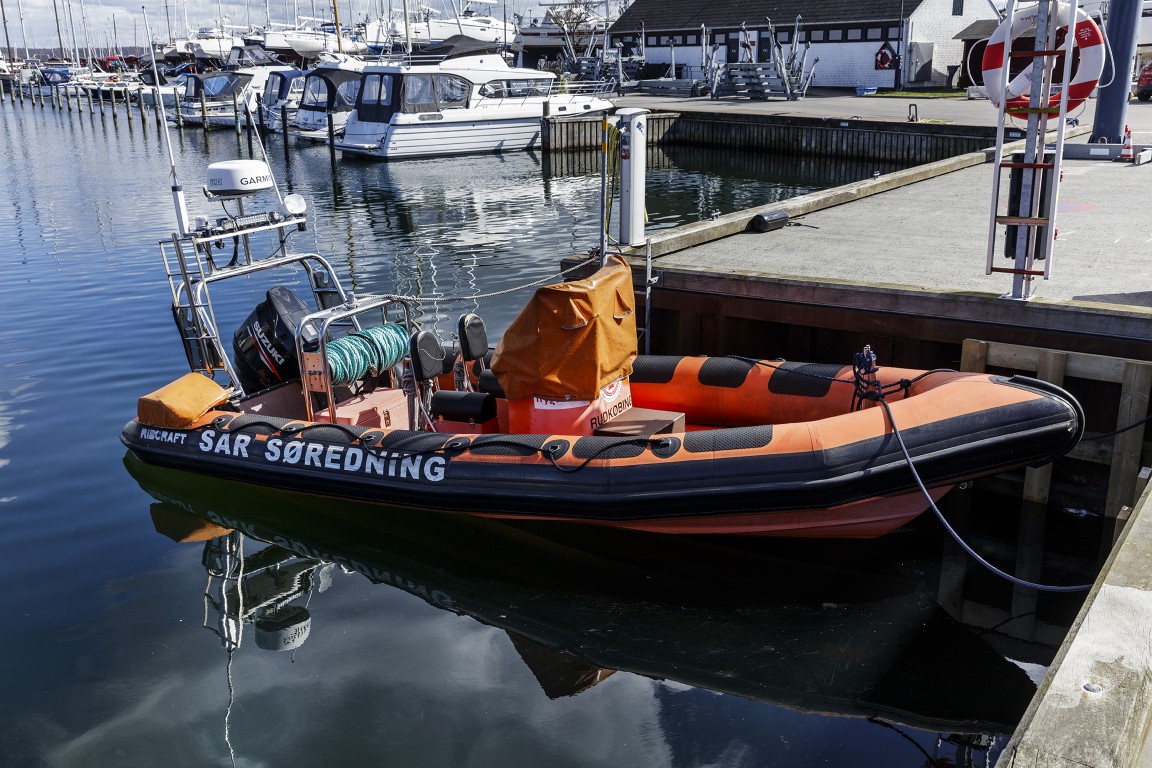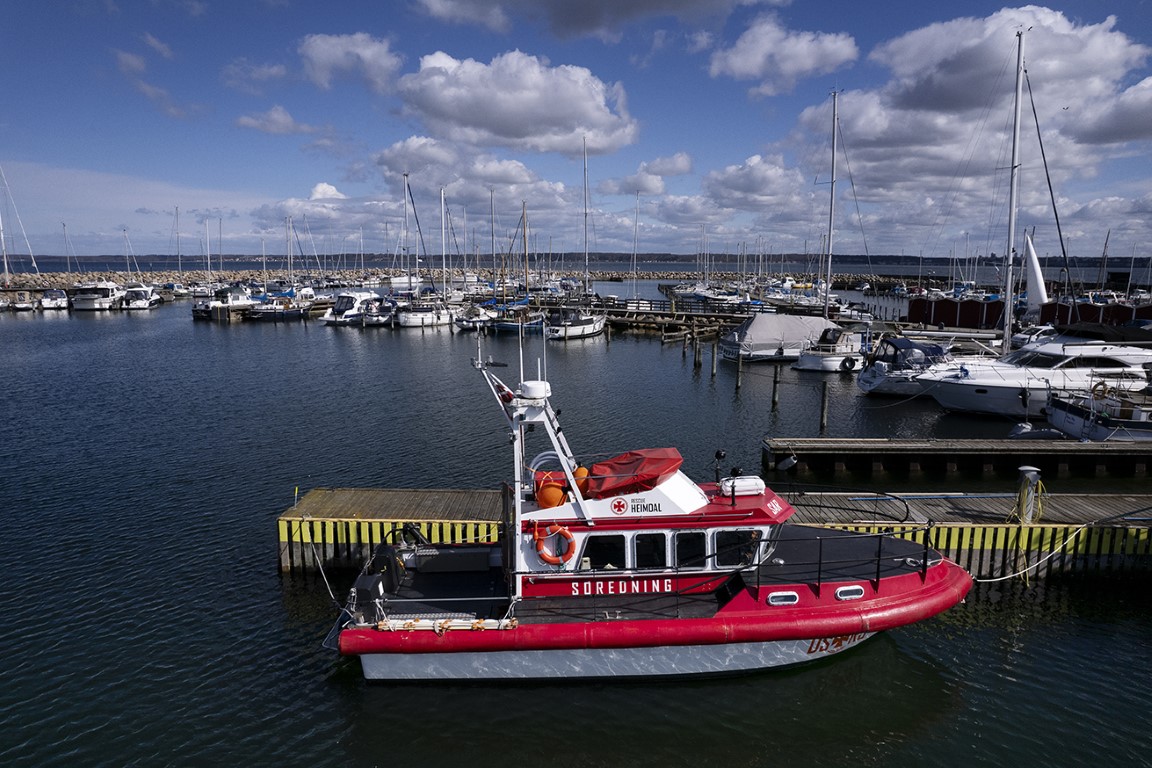Volunteerism is at the core of the operation of the Danish Sea Rescue Society, but education and training ensure that the level of safety can measure up to the efforts of the largest shipping companies.
Just as various water-going vessels come in all sizes – from a rowboat and cruise liners to the world's largest container ships – safety considerations also exist in all contexts. Simpler in the rowboat than, for example, on Marseille Maersk, but just as important when human lives are at stake.
The people at the Danish Sea Rescue Society (DSRS) also know this. The association was established in 2004 and has since consisted of volunteer enthusiasts manning 13 rescue stations spread across most of Denmark. The economy is made up of subscriptions from the almost 13,000 members, supplemented by casual contributions from foundations. A single full-time employee coordinates operations.
UFDS has visited one of DSRS' largest stations, located in Elsinore, where station chief Anders Lassen is the manager of the approximately 30 operational volunteers who are ready to move out around the clock to non-life-threatening situations with a response time of no more than 20 minutes.
A typical task can be towing a yachtsman with engine failure. Not in itself particularly dangerous, but if, for example, the boat drifts around in the heavily trafficked shipping channel on the Sound – which we have previously talked to Sundbusserne about – it can quickly become dicey for those involved.
»We have about 100 operations a year here in Elsinore – 1,000 nationwide – the vast majority of which are towing. Just under a third of the actions are initiated by JRCC (Joint Rescue Coordination Center under the Armed Forces in Karup, ed.) and fall under the category of what we call preventive sea rescue, which means that we prevent some situations from becoming serious,« Anders Lassen says.
»Our mantra of getting everyone safely to port applies to everybody and not least ourselves. And this is where training and education serves as the way to achieve the best possible level of safety.«
Anders Lassen, station chief, Danish Sea Rescue Society, Elsinore
For example, if a sailboat is allowed to drift far out into the Kattegat, it means a much larger and more expensive rescue operation than if DSRS brings people in. It costs DKK 50,000 an hour to send a helicopter into the air, he points out, while DSRS moves out for free.
»We don't get paid, so what we 'live on' is the joy and gratitude people show when we come to their aid in a stressful situation. That's what makes it all worth while,« says Anders Lassen, who himself, like many of the volunteer rescuers, has several years as a yachtsman behind him.
In distress, you can either call DSRS directly – member or not – if you have the number of the nearest rescue station, or you can dial 112, which will forward the call to JRCC. Here, the officer on duty will then alert DSRS – or send a helicopter if lives are at stake.
Must be able to save themselves
Like the large shipping companies, the Danish Sea Rescue Society also has a plan for the various drills that the volunteers carry out during the year. Specifically, the team on duty typically trains twice a week after a fixed roll, ensuring that all bases are covered.
»We practice navigation in the dark, towing, search patterns, man-overboard, grounding and a lot of other stuff according to the plan, so everyone gets through everything in a year. Our rule is that as a volunteer you must participate in at least half of all drills in order to be operational,« Anders Lassen says.
In addition, there are only few requirements to become an active rescuer; You must be available during your on-call days, be physically able to move around safely on the boats and be able to rescue yourself out of the water.
Furthermore, you must have a speedboat certificate, which is part of the intro course, training in cardiopulmonary resuscitation and general knowledge of the station, equipment and procedures.
»We take on new people in teams a couple of times a year, who then serves as aspirants for a season, i.e. summer or winter, which gives us a window to size each other up, both in terms of practical and social issues. Then you can become a rescue assistant and later a rescuer and finally a boatsman,« Anders Lassen says.
Each of these steps requires multiple degrees; As a rescuer you must have a certificate of proficiency, as a boatsman you must have extended knowledge of search patterns and the like. To this end, DSRS has a well-defined training program that both new and experienced volunteers can follow.
In addition to this, DSRS also participates in follow-up courses under JRCC at the naval station in Frederikshavn, allowing volunteers to train in simulators, search patterns, on-scene coordination and much more.
The station in Elsinore also works closely with its sister organization on the Swedish side of the Sound, with whom they arrange a major drill every year, just as many emergency calls are handled jointly.
»They help us, and we help them if a Swedish sailor runs aground over here or vice versa. And then we had our big drill here a couple of weeks ago (early April, ed.), involving two helicopters, one Danish and one Swedish, and then we simulated with dolls in the water that two ships had collided, so we can practice coordinating and talking together to save people,« Anders Lassen explains.
'People count on us'
In other words, being an operational volunteer in the Danish Sea Rescue Society is different from showing up at a Red Cross store one day a week. All the same, Anders Lassen admits that there are limits to what can be asked of people, precisely because they are volunteers – and the average age is around 60.
»I've been a in managerial positions in the corporate world for a lot of years, and it's easier in many ways, because there I could just fire people, just to paraphrase. But I can't do that here, so it's very much about appreciative leadership and companionship instead of leadership,« the experienced station chief says.
Nevertheless, DSRS have seen significant developments recently, he continues. The number of members has tripled over the last four to five years, which has raised the bar in terms of financial possibilities for the organization when it comes to purchasing equipment and the type of tasks that can be undertaken.
»It also means that people are counting on us. JRCC expects us to be ready, and that also means increased demands on our volunteers. Back in the day, the sentiment was that we were some old men in rubber boats venturing out in good conditions, but that is no longer the case, and that is because we have moved a lot in terms of education, skills and equipment,« Anders Lassen says.
This plays directly into DSRS' mantra: Together, to get everyone safely to port. Thus, the underlying mission is to provide safety at sea for everyone who uses it; a task that – like the DSRS – has grown steadily in recent years.
»Safety and security are two sides of the same coin. Security is also knowing that someone will come to the rescue if you need it. So just being here creates security, and it's also a form of safety for the sailors out there,« Anders Lassen says.
On the internal lines, the volunteering aspect means both different but also extra demands on the volunteers when it comes to their own safety. Thus, situations may arise in which the DSRS has to stand back, although this has yet to happen.
»Then we have to leave it to the professionals. Our mantra of getting everyone safely to port applies to everybody – whether you are on a paddle board, in a kayak, a sailboat or a ferry – and not least ourselves. And this is where training and education serves as the way to achieve the best possible level of safety, so we know our own limits and are confident in each other and our abilities and our equipment,« Anders Lassen concludes.



